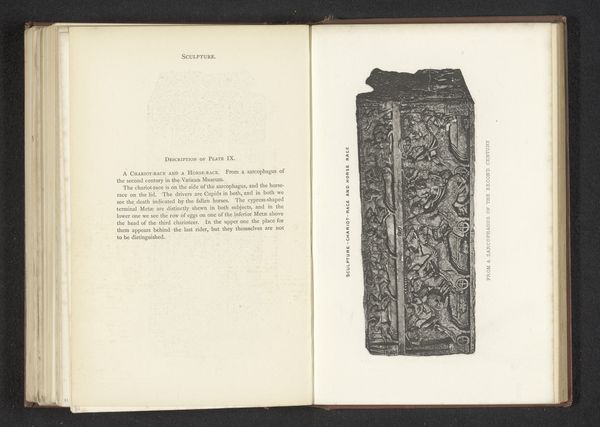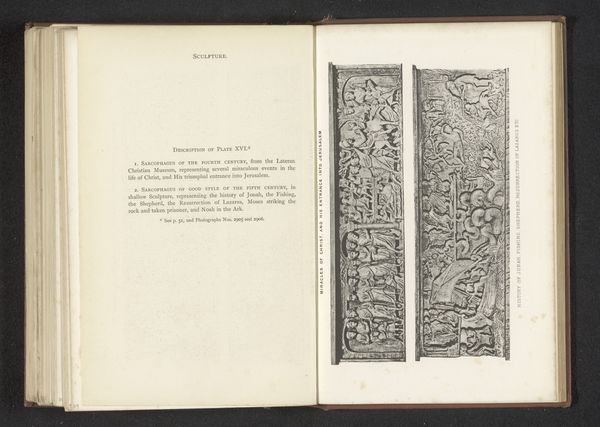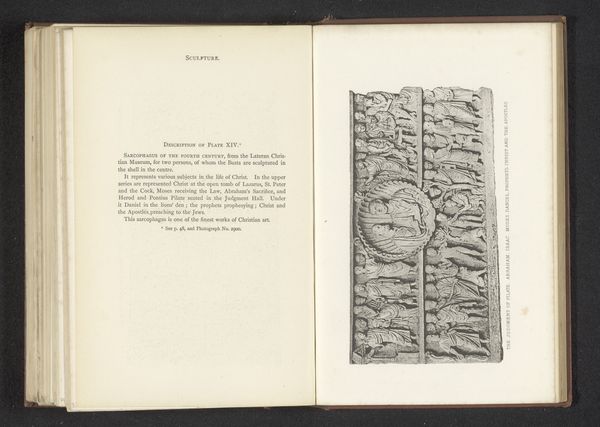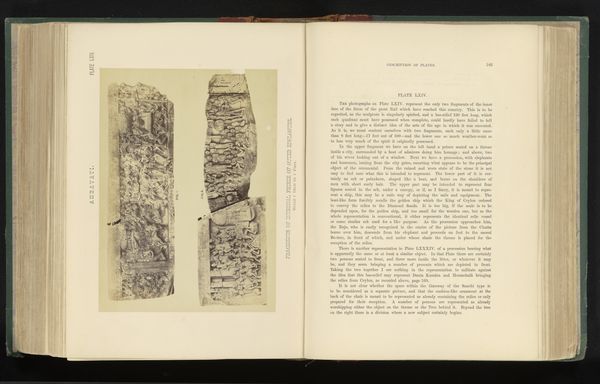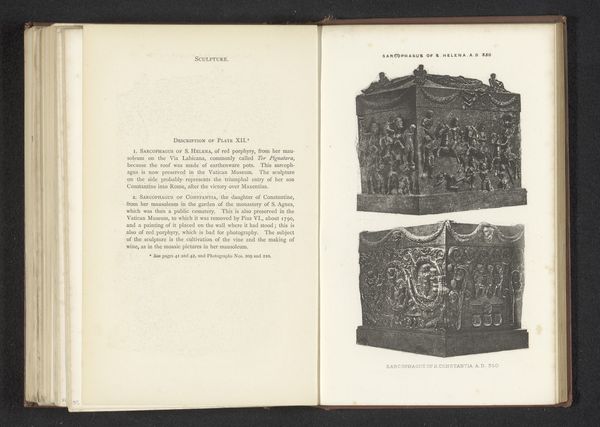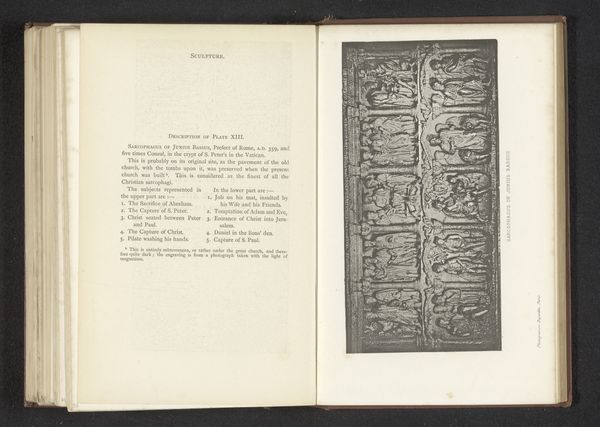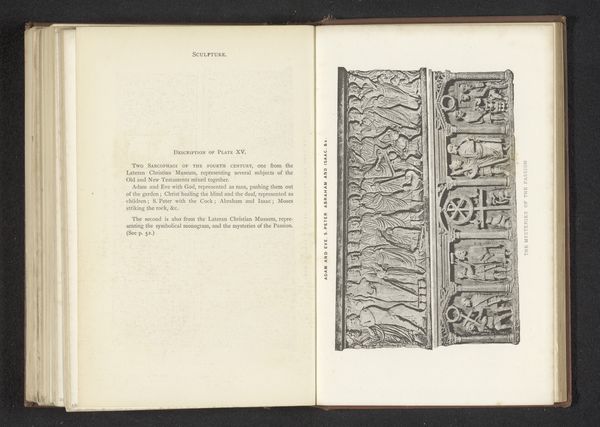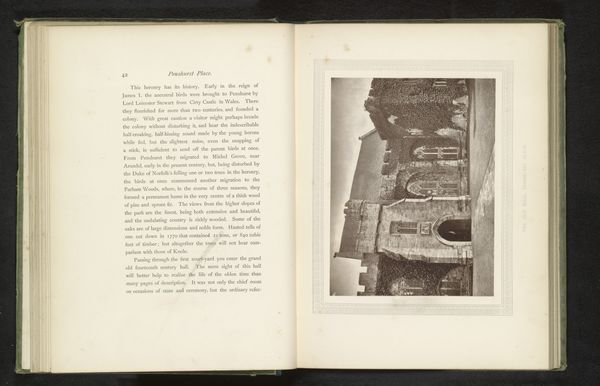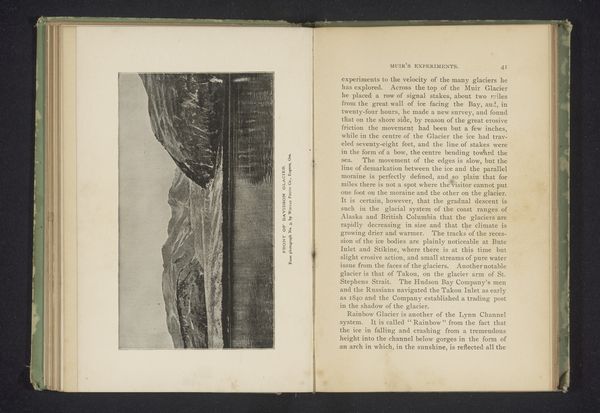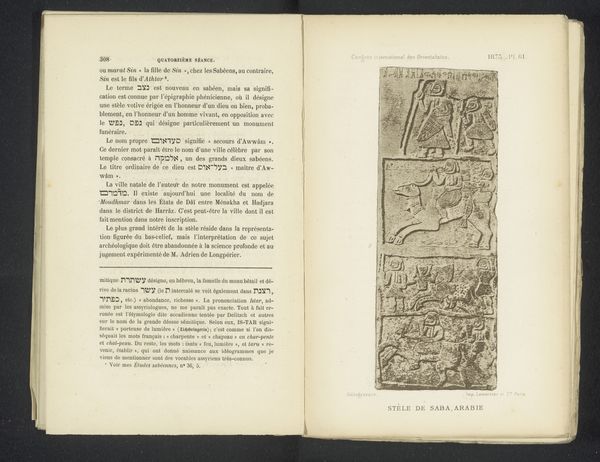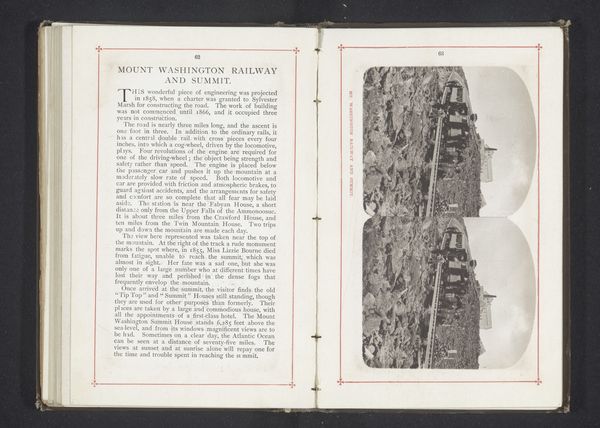
print, relief, sculpture, marble
# print
#
greek-and-roman-art
#
relief
#
figuration
#
romanesque
#
ancient-mediterranean
#
sculpture
#
history-painting
#
marble
Dimensions: height 145 mm, width 224 mm
Copyright: Rijks Museum: Open Domain
Curator: Before us, we see a print depicting a marble relief from a sarcophagus. This work, titled “Relief of a Sarcophagus, Depicting a Bacchanal”, dates from before 1877 and presents a scene of a Bacchic festival, those wild celebrations dedicated to the god Bacchus. Editor: Immediately, I'm struck by the dynamism, all those writhing figures crammed into the frame. It’s almost claustrophobic. There's a strong linear emphasis that leads my eye upwards in a zig-zagging motion across the carved marble texture. Curator: Indeed. This visual energy embodies the essence of a Bacchic ritual, full of ecstatic abandon and liberation. Look closely, and you will notice how it serves as a symbol of death and rebirth, which aligns beautifully with its original context, an adornment to a sarcophagus. Editor: I see what you mean about rebirth. It makes me think of similar works of that time. It looks as though, due to being a relief from a sarcophagus, the piece loses its completeness because we aren't able to perceive the overall volume. And the patterns above and below add to the sense of compressed activity within this panel. Curator: Exactly. The visual chaos actually underscores the deeper meaning of the cult of Bacchus; its promise of transcending earthly limitations and attaining immortality through ecstatic rituals. It connects with our deepest psychological desires. Editor: Do you think it being printed instead of the sculpture, how much that changes the viewer's perspective? We lose so much three-dimensionality here and tactile aspects of the cold marble. How might this loss affect our ability to connect? Curator: It alters our experience. We lose some of that immediate connection to the ancient artisans, but perhaps it allows us to access its story, making it accessible to a new public. That, itself, echoes Bacchus, god of transformations. Editor: An intriguing point! Reflecting on the relief, it is remarkable how even in a printed format, we can still read something vital in those formal arrangements. Curator: Agreed! And pondering the imagery, this relief stands as a lasting symbol of humanity's eternal quest for liberation, transformation, and renewal.
Comments
No comments
Be the first to comment and join the conversation on the ultimate creative platform.
